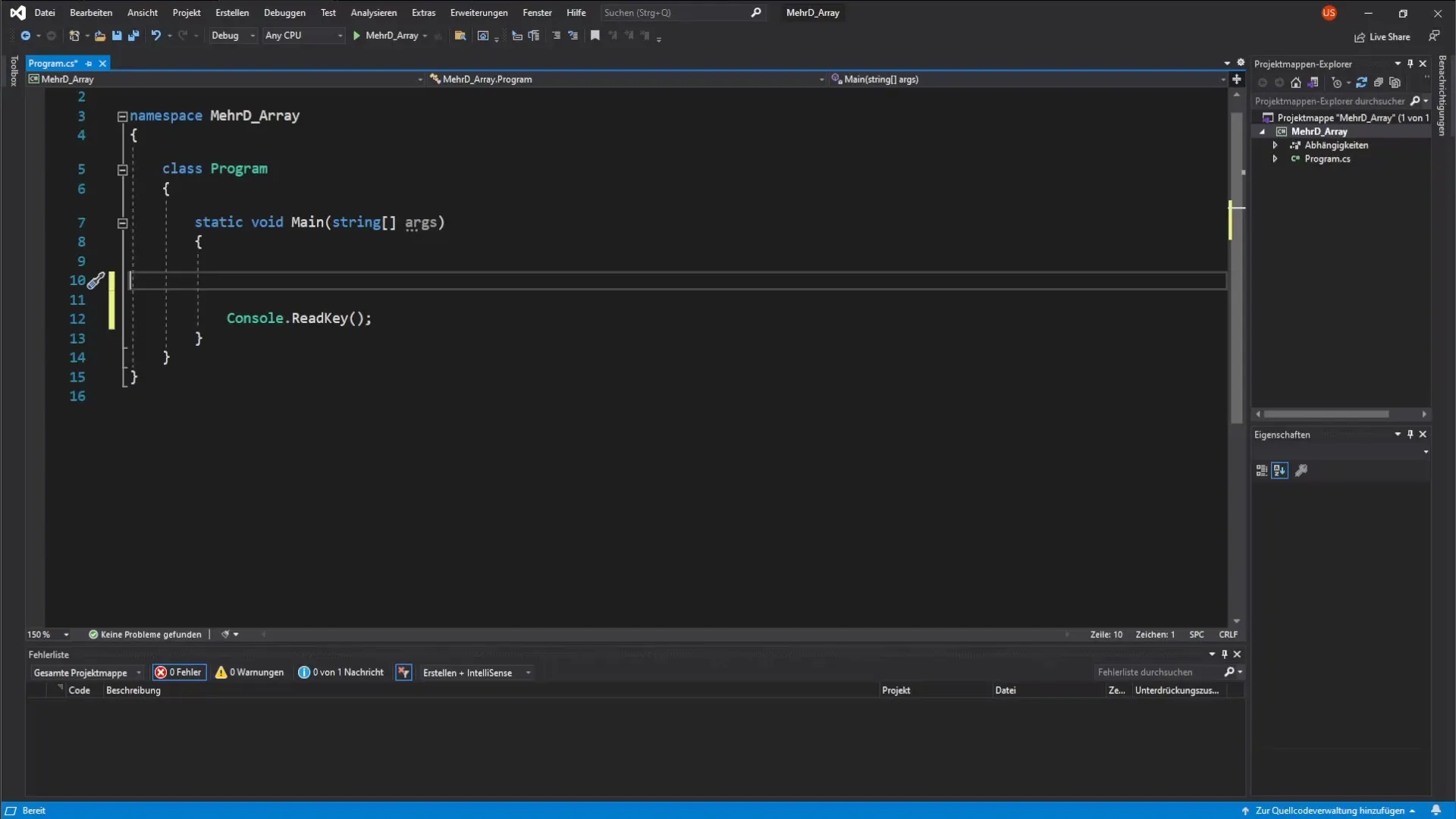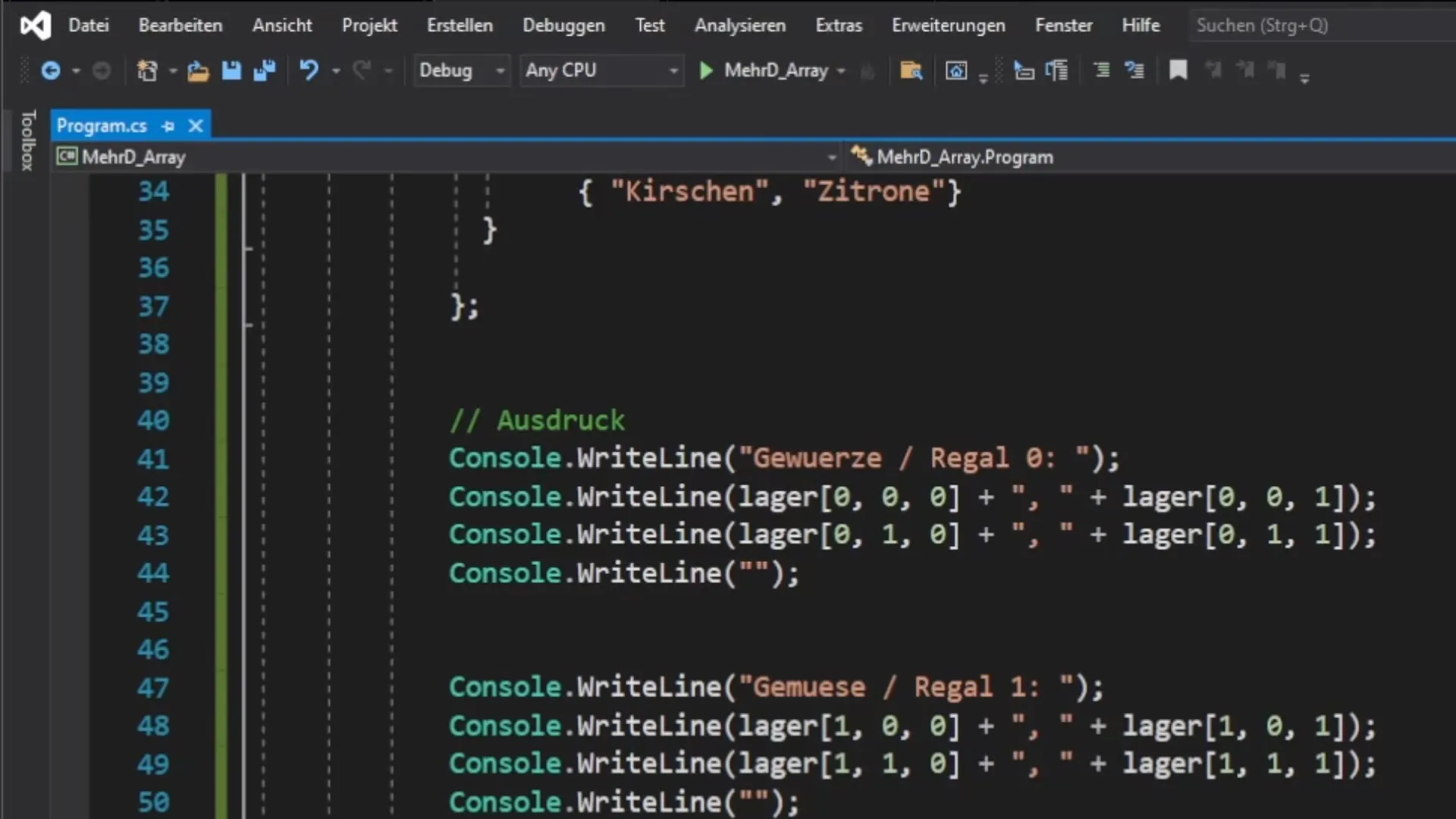The understanding of three-dimensional arrays is an essential part of programming languages like C#. When dealing with such data structures, a wide range of possibilities opens up, especially in the storage and management of complex datasets. In this tutorial, I will show you how to work with three-dimensional arrays in C# and what steps are necessary to use them effectively.
Key insights
- A three-dimensional array can be viewed as a collection of arrays organized in three dimensions.
- The declaration and initialization of a three-dimensional array is done with curly brackets.
- Accessing the elements of a three-dimensional array requires specifying three indices: one for each dimension.
Step-by-step guide
1. Understanding a three-dimensional array
To understand how to work with three-dimensional arrays, it is helpful to imagine a simple analogy like a Rubik's cube. A cube consists of several faces, with each face divided into rows and columns. In a three-dimensional array, we have the dimensions X, Y, and Z. So if you want to access a specific element in this array, you need the index for each dimension – for example, to identify the red square on the first shelf.

2. Declaring a three-dimensional array
Let’s consider a practical example: we want to model the shelves of a kitchen consisting of three shelves with multiple compartments, rows, and columns.
Here, we use two commas between the dimensions to indicate that it is a three-dimensional array.
3. Initializing the array
The initialization of the three-dimensional array is done with curly brackets. Here, you set the contents of the shelves, rows, and compartments.
With this structure, you assign specific contents to each shelf, row, and compartment.
4. Accessing elements of the array
To access the elements of the array, you use the Console.WriteLine method. You specify the name of the array followed by square brackets and specify the indices for shelf, row, and compartment.
This means that you are directly accessing the specific spices on the first shelf and the first row.
5. User interaction and output
If you want to prompt the user to view the contents of a shelf, you can design the program to output the desired information.
With this line, you see the output for the spice shelf. You can also include an exercise for the user to display the shelf with vegetables or fruits.
6. Practice and deepening
It is important to consolidate what you have learned. Write a program that outputs the contents of all shelves, making sure to consider the index design. You should iterate through the different dimensions to display all contents. If you find yourself having trouble, don’t hesitate to ask questions or review your details.

Summary - Three-dimensional arrays in C# in detail
In this guide, you learned how to understand, declare, initialize, and use three-dimensional arrays in C#. By using practical examples, the main methods were explained to effectively access and output the contents of arrays.
Frequently Asked Questions
How do I initialize a three-dimensional array?You use curly brackets and add the values for each dimension, e.g. { { { "Cinnamon", "Cumin" },... } }.
How do I access an element in a three-dimensional array?Use the syntax storage[Shelf, Row, Compartment], e.g. storage[0,0,0] for Cinnamon.
What is the advantage of three-dimensional arrays?They allow for a structured and clear storage of complex data in multiple dimensions.


